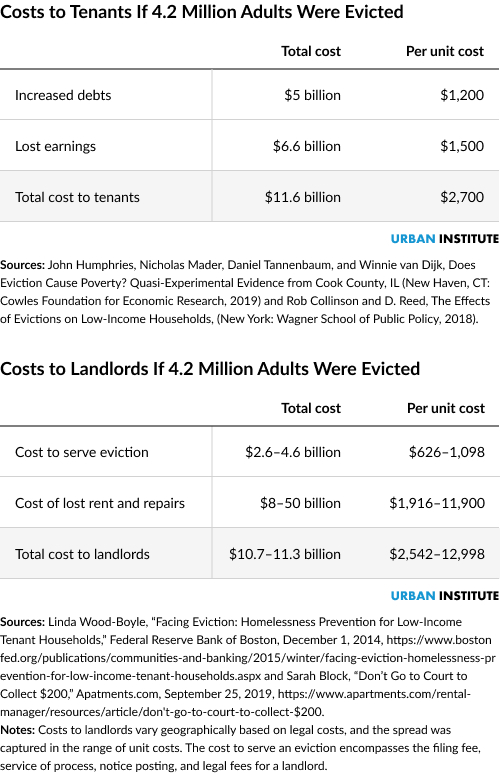
On June 30, the nationwide eviction moratorium is slated to end. This federal moratorium and the moratoria enacted by states and cities across the country during the pandemic have saved lives and prevented an estimated 1.55 million evictions. Although there are reports the moratorium will be extended another 30 days, the risk isn’t gone.
Data from the US Census Bureau’s Household Pulse Survey released earlier this month found approximately 4.2 million adults report being at risk of eviction or foreclosure in July and August. These adults are significantly more likely to be Black, Indigenous, Latinx, or other people of color. These groups have been excluded from homeownership and wealth accumulation opportunities, and they are facing more severe health and economic impacts from COVID-19.
The federal government appropriated almost $50 billion in emergency rental assistance across several pandemic relief packages. But Congress approved these packages in December 2020 and March 2021, which strained agency capacity to distribute resources and has meant the money isn’t getting to tenants fast enough. Ending the eviction moratorium when emergency rental assistance is still unavailable at the scale needed could have devastating effects for tenants, landlords, and communities.
Evictions are costly to tenants, landlords, and communities
An eviction leads to significant hardships for a family. In addition to losing their home and the accompanying psychological distress, they may lose their personal belongings, children may have their education disrupted, and adults may experience job loss (PDF).
These disruptions can be costly in both the short and long term. The loss of employment and belongings, as well as the costs associated with moving and securing new accommodations, is significant. Based on a number of studies, we estimate that if the 4.2 million adults who report being at risk of eviction in the next two months were actually evicted, it could result in a total of $6.6 billion in lost earnings (PDF) and $5.0 billion in increased debt (PDF) for those tenants.
Evictions are also costly for landlords, who can accrue filing fees, lawyer costs, lost rent, and damages to units. Studies show these eviction-related costs vary greatly across different states and localities. Using available data we estimate that if the 4.2 million adults who report being at risk of eviction in the next two months were evicted, it would cost landlords nationwide a total of $2.6 to $4.6 billion to serve and process evictions and between $8.0 and $50.0 billion in lost rent and repairs to units.

Communities also accrue costs associated with evictions. One study in New York City found communities experience a significant loss of affordable housing units that could have been preserved if tenants had been provided eviction prevention resources and had remained in the units. And, for the subset of evicted tenants who become homeless, the costs increase drastically. A recent study (PDF) estimated emergency shelter costs nearly $5,000 per month per family, and re-housing a family costs approximately $7,000, with households receiving assistance for an average of seven months.
What jurisdictions can do to prevent a wave of evictions
Localities can minimize the number of people evicted after June 30 and reduce the associated costs to tenants, landlords, and their community through four key strategies:
- Reinstate a state or local eviction moratorium to keep people housed until emergency rental assistance resources are readily available and accessible. Some states have already taken this step, including Hawaii, New Jersey, and New York. These eviction moratoria remain a stopgap until emergency rental assistance is available at scale.
- Target emergency rental assistance to households that need it most urgently. To do this, jurisdictions should focus on addressing inequities attributable to structural and systemic racism, as well as the disparate health and economic impacts of COVID-19; prioritize households at the greatest risk of homelessness, including those with extremely low incomes (earning 30 percent or less of the area median income) and those with histories of homelessness; and target resources to neighborhoods with the greatest need.
- Make rent assistance easily accessible by minimizing barriers to assistance and simplifying application processes. These efforts should also increase the equitable distribution of rent assistance in a jurisdiction.
- Set up partnerships between courts and rental assistance administrators to ensure no eviction filing for nonpayment of rent is processed without tenants and landlords first seeking available state and local emergency rental assistance funds. Innovative eviction diversion programs have started during the pandemic that could be models for national eviction reform. However, short of standing up a new program, courts can lightly restructure their operations to ensure the rental payments are made and costly evictions are avoided.
At this critical moment, the human and social costs of eviction mean that policymakers should explore every possible strategy to mitigate the impending harm of the end of the eviction moratorium and to support tenants, landlords, and communities. Extending the federal moratorium for an additional 30 days is a good start, but it remains to be seen whether that extension will be enough and whether emergency rental assistance resources will be available at the scale needed by the end of next month.
Tune in and subscribe today.
The Urban Institute podcast, Evidence in Action, inspires changemakers to lead with evidence and act with equity. Cohosted by Urban President Sarah Rosen Wartell and Executive Vice President Kimberlyn Leary, every episode features in-depth discussions with experts and leaders on topics ranging from how to advance equity, to designing innovative solutions that achieve community impact, to what it means to practice evidence-based leadership.